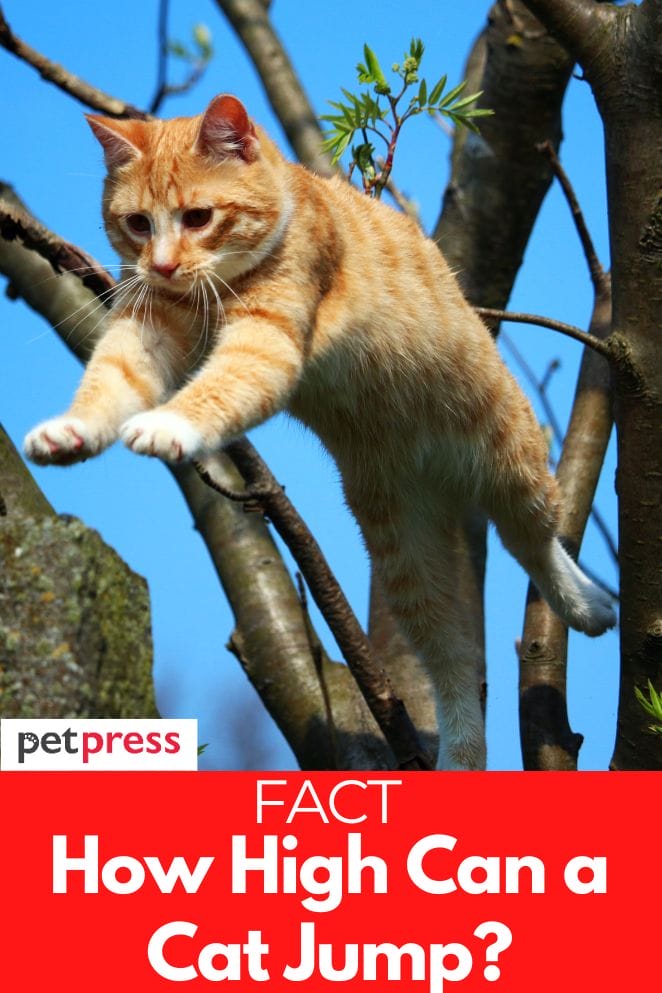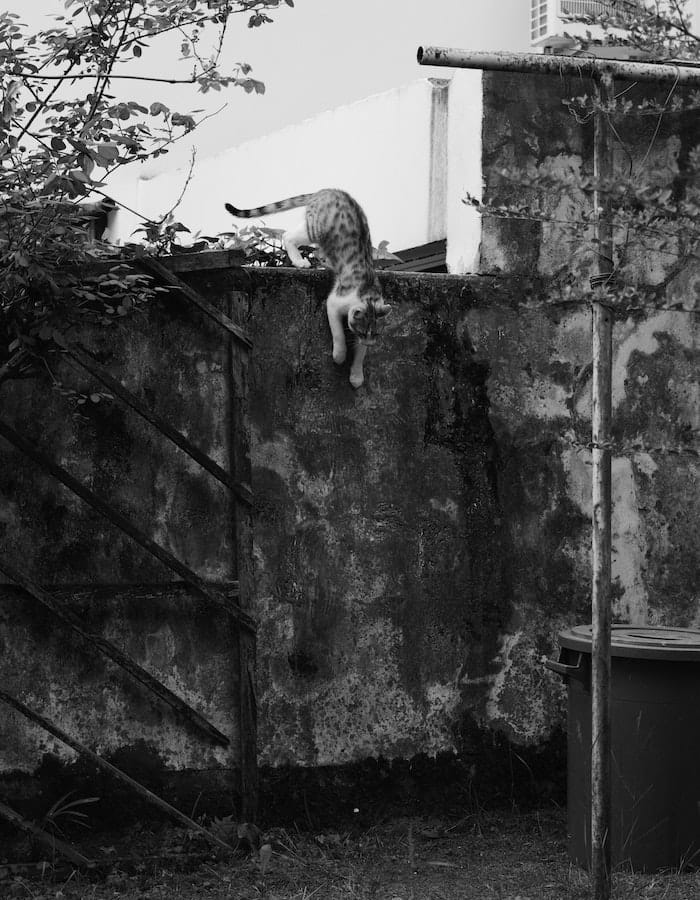
There’s no doubt that cats are amazing creatures. They can jump to high places, they’re great hunters, and they make great pets. But just how high can a cat jump?
That’s a question that has puzzled scientists for years.
In this blog post, we will take a look at some of the research that has been conducted on this topic and try to answer the question once and for all!
How high can a cat jump?

The answer may surprise you. A cat’s ability to jump is truly amazing.
In a single bound, they can cover distances that are many times their own body length.
This natural gift for jumping is likely due to a number of factors, including their powerful legs, flexible spine, and lightweight.
Cats also have an instinctive understanding of how to use their bodies in mid-air, allowing them to make minute adjustments that result in a successful landing.
While most cats are able to jump quite high, some breeds are particularly known for their acrobatic abilities.
For instance, the Siamese is known for its famed “High Jump,” in which it seemingly leaps straight up into the air from a standing start.
Whether your cat is a champion jumper or a more modest leaper, you can rest assured that they possess an impressive ability that is unmatched by any other animal.
What are some factors that determine the height of a cat’s jump?

There are a few factors that can affect the height of a cat’s jump.
Size and weight
When it comes to feline agility, size and weight are important factors to consider.
Larger cats or those carrying extra weight may not be able to jump as high as smaller, leaner cats.
This is due to the fact that bigger bodies require more muscle power and energy to propel them upward.
Additionally, heavier cats tend to fall back down to the ground more quickly due to gravity.
As a result, they often struggle to achieve the same level of height and distance as their lighter counterparts.
Age
As cats age, they may experience a decline in muscle mass and strength. This can lead to lower jumps and a reduced ability to land on their feet.
The surface on which the cat is jumping may also play a role in its landing success.
A soft surface, such as a bed or couch, will be more forgiving than a hard floor if the cat does not land squarely on their feet.
Additionally, older cats may be more hesitant to jump due to pain or stiffness in their joints.
Training
Believe it or not, cats can be trained to jump higher!
This is often seen in competitive cat shows, where felines are taught to jump through hoops or onto platforms of increasing height.
However, it’s important to note that jumping should never be forced upon a cat and any training should always prioritize their safety and comfort.
Breed
Some cat breeds have a reputation for being impressive jumpers such as the Abyssinian or Bengal.
These breeds may possess a natural inclination towards jumping, but it’s important to remember that individual cats within any breed can vary in their jumping abilities.
Why can cats jump so high?

Cats have evolved to be remarkable jumpers, thanks to a combination of physical attributes and instinctual behaviors.
Flexible spine
A cat’s spine is incredibly flexible, allowing them to contort its body mid-air and adjust its landing position.
This flexibility also allows cats to achieve a greater range of motion in their hind legs, enabling them to propel themselves higher.
Powerful hind legs
Cats possess strong hind legs that are crucial for jumping and climbing.
The muscles in their hind legs are larger and more developed compared to those in their front legs, allowing them to generate the necessary power for jumping great heights.
Lightweight
Cats have a lightweight, slender build which allows them to easily lift and maneuver their bodies in the air.
Instinctual understanding
Cats also have an innate understanding of how to use their body during a jump.
They instinctively know when to tuck in their legs for added height or how to twist and turn mid-air for a successful landing.
What is a record for the highest jump by a cat?

Alley, a pet cat living in California, made headlines in 2016 when she set the Guinness World Record for the highest jump by a domestic cat.
Alley jumped an impressive 6.07 feet, clearing a hurdle that was near twice her height.
While Alley’s feat is remarkable, it’s important to remember that not all cats will be able to reach such heights.
Forcing cats to jump can be dangerous, and some breeds are simply not built for it. Still, it’s fun to watch a kitten play and see how high they can manage to jump.
Who knows, you might have your own record-breaker in your home.
The takeaway
Cats are able to jump to a height of approximately six times their body length. This is an amazing feat, considering that the average cat is only about two feet long.
While some individual cats may be able to jump even higher, the six-times-body-length rule seems to be a good general guideline.
Cats are able to jump so high due to their strong leg muscles and flexible spine.
Their claws also play an important role, providing traction and helping them to propel themselves upwards.
So the next time you see a cat leaping towards something, remember that they’re capable of some pretty impressive acrobatics.


GIPHY App Key not set. Please check settings